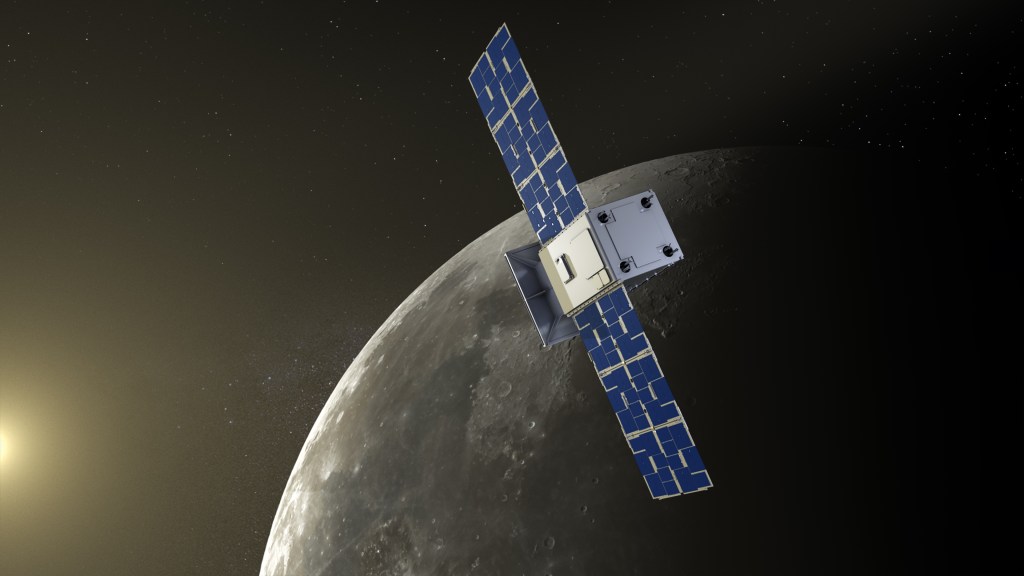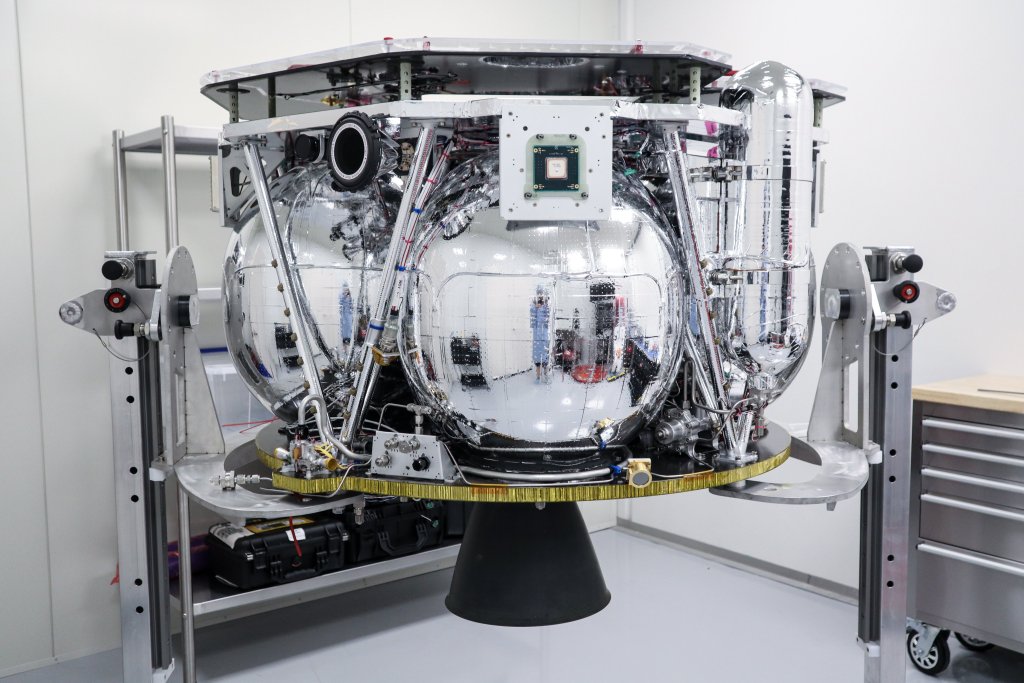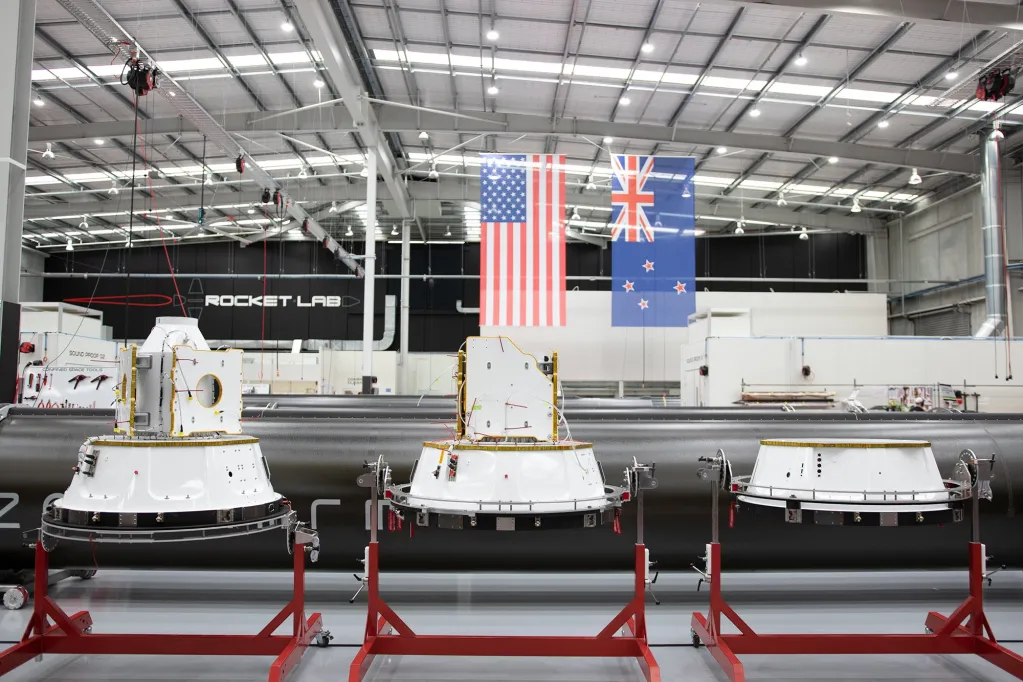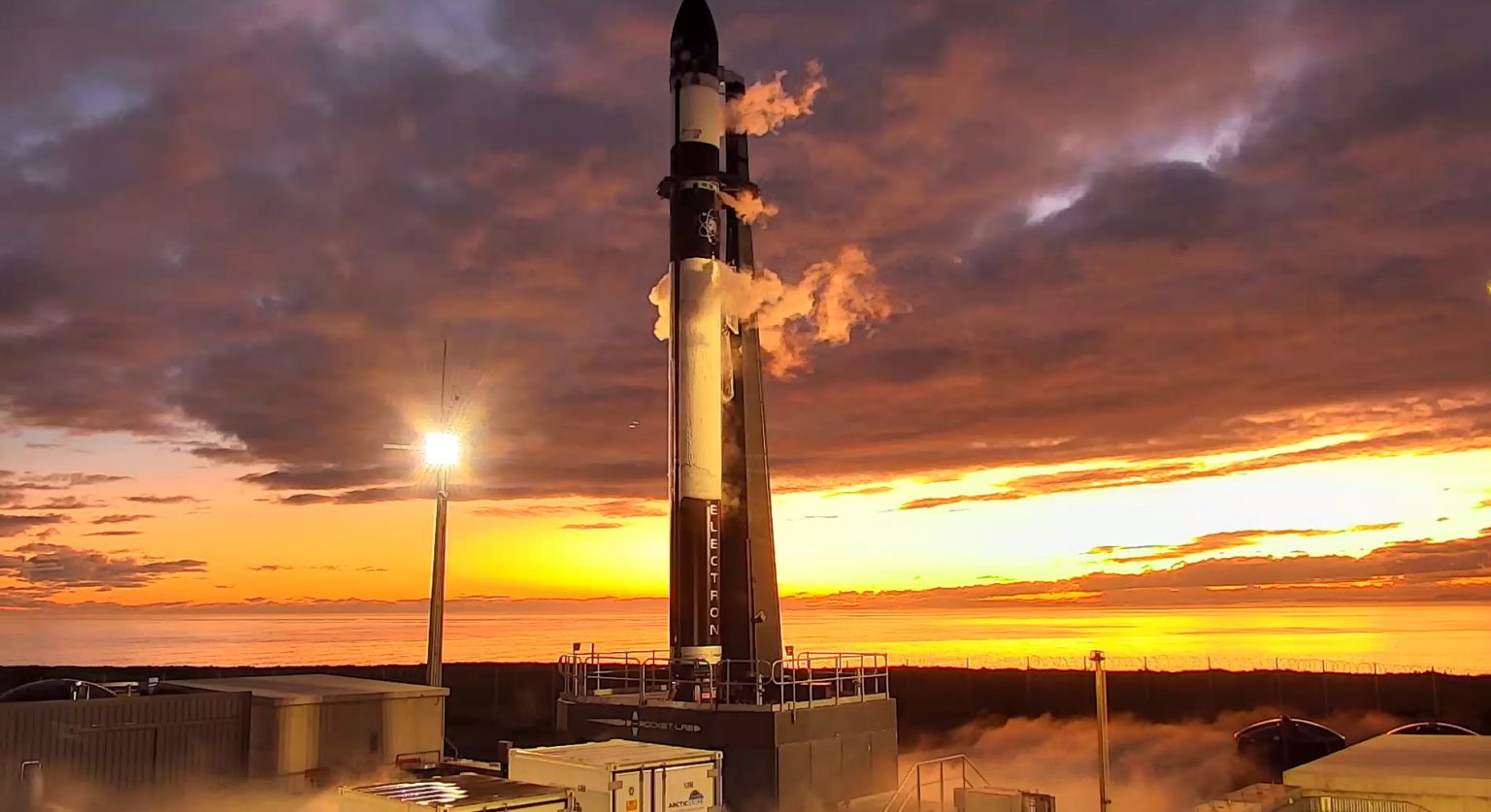Lift Off Time
|
June 28, 2022 – 09:55 UTC | 21:55 NZT |
|---|---|
Mission Name |
CAPSTONE |
Launch Provider
|
Rocket Lab |
Customer
|
National Aeronautics and Space Administration (NASA) |
Rocket |
Electron |
Launch Location |
Launch Complex-1A, Māhia Peninsula, New Zealand |
Payload mass |
300 kg (660 lb) |
Where is the satellite going? |
Near-rectilinear Halo Orbit (NRHO) around the Moon |
Will they be attempting to recover the first stage? |
No |
Where will the first stage land? |
It will crash into the Pacific Ocean |
Will they be attempting to recover the fairings? |
No |
Are these fairings new? |
Yes |
How’s the weather looking? |
N/A |
This will be the: |
– 4th launch for Rocket Lab in 2022 – 27th launch of Electron – 1st deep-space mission for Rocket Lab – 1st flight of Lunar Photon – 73rd orbital launch attempt of 2022 |
Where to watch |
Official livestream |
What’s All This Mean?
Rocket Lab will be launching the Cislunar Autonomous Positioning System Technology Operations and Navigation Experiment (CAPSTONE) for the National Aeronautics and Space Administration. The mission is comprised of one spacecraft which, over the course of many months, will travel to the Moon and enter a Near-rectilinear halo orbit (NRHO). This orbit is unique to NASA’s Artemis Program and will host the Gateway space station, supporting frequent missions to the Moon. The mission is a cooperation between multiple companies including, Terran Orbital, Advanced Space, Rocket Lab, and Stellar Exploration.
What Is CAPSTONE?
In short, CAPSTONE is the first major pathfinder for NASA’s Artemis Program. This program aims to place the next man and first woman on the Moon. However, as revealed by the predecessor Apollo Program, Artemis will take time, planning, and multiple pathfinding experiments. The spacecraft was designed, built, tested, and will be operated by Terran Orbital, with programming and planning conducted by Advanced Space.

There are many key objectives that CAPSTONE aims to complete within its six month expected mission time, with an enhanced mission of an additional 12 months possible. These include confirming the real-life kinetics of the halo orbit and testing brand new navigation technology. Results from this months long experiment will be implemented directly into the development of Gateway.
Near-Rectilinear Halo Orbit
For the first time ever, a spacecraft will be placed into a Near-rectilinear halo orbit (NRHO). This orbit was specifically chosen by NASA as the most suitable orbit for the Gateway spacestation. Gateway is a lunar outpost which will provide a transfer spot for astronauts on long duration missions to the Moon.
This orbit has a period of 6.5 days and has the unique ability to maintain a sight line with Earth at all times, with a one hour lunar eclipse of the Sun every orbit. Perilune (lunar closest approach) will be about 3,000 km (1,900 mi) while its apolune will be about 70,000 km (43,000 mi) and occur over the south pole.
Another benefit of this orbit is the low energy required to get in and out of it, including back to Earth, down to a lower lunar orbit and down to the lunar surface. The specific NRHO for CAPSTONE, and therefore Gateway, is a 9:2 NRHO. More specifically, this means that for every nine revolution CAPSTONE does, the Moon will have rotated twice.
CAPSTONE will help to determine the tracking schedules, using the Deep Space Network (DSN), that will work for Gateway. By using the DSN to generate critical data, CAPSTONE will be able to make more discoveries about the state of the spacecraft around perilune, an area that has “wonky dynamics,” making it difficult to simulate, according to Ethan Kayser from Advanced Space. More specifically, the navigation uncertainty will grow as the spacecraft passes through perilune. Therefore CAPSTONE will employ various strategies to help lessen that navigation uncertainty.
The solution CAPSTONE is hoping to test is to perform one maneuver every revolution at a true anomaly of 200 degrees, about a day after revolution. Only a few centimeters per second of delta-v will be required in this maneuver. As with any maneuver, it has been simulated on the ground. However, CAPSTONE will be able to attempt it in real conditions. If CAPSTONE makes it to the enhanced mission phase, it will perform the station keeping maneuver at various points to observe what works best in those real conditions.
Low-energy Transfer
A unique maneuver to get to the Moon, the low-energy transfer takes about three to four months. This is comparative to the three to four days traveled by the Apollo astronauts, which used a direct transfer. According to Ethan Kayser, CAPSTONE Mission Design Lead at Advanced Space, a direct transfer could take 500 m/s of delta-V for its lunar orbit insertion, way more than CAPSTONE and Lunar Photon are capable of. On the contrary, the insertion using a low energy transfer only requires 20 m/s of delta-V.
“Using a low-energy transfer is really what made this possible using a 12U CubeSat,” said Kayser. The low-energy transfer also leeches off the Sun to enable its magic to work. The Sun performs two actions: assisting to raise the apogee while in Earth orbit and assist in changing the orbit inclination; something that could sometimes add significant delta-V requirements.
Most other spacecraft have used direct transfers, but a few have used the low-energy transfer. The Grail and Genesis missions have both used low-energy transfers. According to Kayser, the limit for a satellite to perform a direct transfer is about 100 kg. Most of this is due to the amount of fuel need to meet the delta-V requirements for the insertion burn.
Cislunar Autonomous Positioning System (CAPS)
In short, CAPS will allow the spacecraft to independently acquire a navigation solution without communicating with the ground. To do that, the spacecraft would communicate with another spacecraft in its vicinity. In the case of CAPSTONE, the Lunar Reconnaissance Orbiter (LRO) is the perfect candidate. This communication will occur at perilune, last a maximum of 40 minutes, and involve a range and range rate measurement which will then be calculated onboard CAPSTONE to get an absolute position. This enables CAPSTONE to understand where it is.
This would not be possible in low Earth orbit because the orbit would be symmetrical. In the NRHO, CAPSTONE can get an absolute position; not just a relative position to LRO. Advanced Space’s Ethan Kayser emphasized the importance of this autonomous and independent navigation as ground stations quickly acquire more spacecraft to track. “We see more and more spacecraft going to the Moon; more and more of those spacecraft will have CAPS as a technology onboard,” Kayser said.
The autonomy comes in after the spacecraft understands where it is in space (absolute position). If the spacecraft is off its preprogrammed orbit, then it will be able to make the station keeping corrections necessary to get back on the right orbit.
Technical Information
CAPSTONE is an extremely complex spacecraft for its size. “We’re 12U so we’re already pushing what I would actually consider a CubeSat,” said CAPSTONE Mission Design Lead Ethan Kayser, who works for Advanced Space. The spacecraft totals, in conjunction with Rocket Lab’s Lunar Photon Kick Stage, to 300 kg (662 lb) or a 12U CubeSat. Alone, the spacecraft weighs 25 kg (55 lb).
The spacecraft has dimensions of 34 x 34 x 61 cm and uses a monopropellant hydrazine system for its station keeping maneuvers. These are also known as Orbital Maintenance Maneuvers (OMM). CAPSTONE has an S-band antenna for communication with the Lunar Reconnaissance Orbiter and an IRIS X-band radio for communication with the DSN.
This mission has seen lots of delays, as most complex and critical missions do, which has been the result of a very tight timeline. Terran Orbital CEO Marc Bell stated, “The biggest challenge was really the timeline. They wanted a very aggressive timeline.” This meant there were no days off for the crews designing and building CAPSTONE as they ensured they hit the timeline expectations and built a reliable spacecraft.
What Is The Role Of CAPSTONE For Rocket Lab?
Rocket Lab, a New Zealand based company, launches smallsats in the range of CubeSats and bundles of micro satellites. Therefore, this lunar mission is a major step for Rocket Lab and one that presented many challenges. “[CAPSTONE] has been the single greatest program in the company outside of Neutron,” said CEO of Rocket Lab, Peter Beck, in an interview with Everyday Astronaut.
To add more perspective, as of CAPSTONE, the most Electron has launched is about 180-200 kg. CAPSTONE and Lunar Photon weigh in at least 300 kg. Beck put it simply, “The CAPSTONE mission is the definition of a challenge.” As with many difficult missions come many sacrifices. For example, due the the heavy nature of the payload, the first stage has been stripped down to its bare frame. No recovery hardware, no cameras. The recovery hardware itself takes about 10-15% of the payload mass capabilities of a given launch.
What Is Rocket Lab’s Lunar Photon?
Specifically built for missions beyond Earth orbit, Lunar Photon, while being based on Photon, has been designed nearly from scratch. It will be able to reach destinations including Venus and Mars as well as the Moon. “It’s basically a giant tank of fuel and oxidizer,” said Beck. To reduce the mass as much as possible, Lunar Photon uses Rocket Lab’s thin-wall carbon composite tanks.
Lunar Photon also hosts a new engine, Reaction Control System, and new valves. To further reduce mass and withhold the Electron style, Lunar Photon uses electrically powered turbo pumps. The use of a pressurant to help start the engines would add incredible amounts of mass when compared to the inert mass of the vehicle. These electric motors will have full battery charge ahead of each burn since the batteries can recharge in between burns using solar power.

The main role for Lunar Photon is to get CAPSTONE from Earth orbit, to lunar orbit through a trans-lunar injection. The use of the low energy transfer will primarily be conducted by Lunar Photon. To do so, Lunar Photon will conduct burns at perigee, fine tuning and slightly raising the orbit until the final translunar injection burn.
The secondary mission for Lunar Photon is to potentially conduct a lunar fly-by of its own and perform some other observations. This is entirely dependent on how much propellant has left. However, the primary mission is to get CAPSTONE on a stable and near-perfect translunar injection.
What Is Electron?
Rocket Lab’s Electron is a small-lift launch vehicle designed and developed specifically to place small satellites (CubeSats, nano-, micro-, and mini satellites) into LEO and Sun-synchronous orbits (SSO). Electron consists of two stages with optional third stages.
Electron is about 18.5 meters (60.7 feet) in height and only 1.2 meters (3.9 feet) in diameter. It is not only small in size, but also light-weighted. The vehicle structures are made of advanced carbon fiber composites, which yields an enhanced performance of the rocket. Electron’s payload lift capacity to LEO is 300 kg (~660 lb).

The maiden flight It’s A Test was launched on May 25, 2017, from Rocket Lab’s Launch Complex-1 (LC-1) in New Zealand. On this mission, a failure in the ground communication system occurred, which resulted in the loss of telemetry. Even though the company had to manually terminate the flight, there was no larger issue with the vehicle itself. Since then, Electron has flown a total of 26 times (23 of them were fully successful) and delivered 146 satellites into orbit.
First And Second Stage
| First Stage | Second Stage | |
|---|---|---|
| Engine | 9 Rutherford engines | 1 vacuum optimized Rutherford engine |
| Thrust Per Engine | 24 kN (5,600 Ibf) | 25.8 kN (5,800 Ibf) |
| Specific Impulse (ISP) | 311 s | 343 s |
Electron’s first stage is composed of linerless common bulkhead tanks for propellant, and an interstage, and powered by nine sea-level Rutherford engines. The second stage also consists of tanks for propellant (~2,000 kg) and is powered by a single vacuum optimized Rutherford engine. The main difference between these two variations of the Rutherford engine is that the latter has an extended nozzle that results in improved performance in near-vacuum conditions.
For the Love At First Insight mission, the company introduced an update to the second stage by stretching it by 0.5 m. Moreover, they flew an Autonomous Flight Termination System (AFTS) for the first time.
Rutherford Engine
Rutherford engines are the main propulsion source for Electron and were designed in-house, specifically for this vehicle. They are running on rocket-grade kerosene (RP-1) and liquid oxygen (LOx). There are at least two things about the Rutherford engine that make it stand out.

Firstly, all primary components of Rutherford engines are 3D printed. Main propellant valves, injector pumps, and engine chamber are all produced by electron beam melting (EBM), which is one of the variations of 3D printing. This manufacturing method is cost-effective and time-efficient, as it allows to fabricate a full engine in only 24 hours.
Rutherford is the first RP-1/LOx engine that uses electric motors and high-performance lithium polymer batteries to power its propellant pumps. These pumps are crucial components of the engine as they feed the propellants into the combustion chamber, where they ignite and produce thrust. However, the process of transporting liquid fuel and oxidizer into the chamber is not trivial. In a typical gas generator cycle engine, it requires additional fuel and complex turbomachinery just to drive those pumps. Rocket Lab decided to use battery technology instead, which allowed eliminating a lot of extra hardware without compromising the performance.
Kick Stage
Electron has optional third stages, also known as the Kick Stage, Photon, and deep-space version of Photon. The Kick Stage is powered by a single Curie engine that can produce 120 N of thrust. Like Rutherford, it was designed in-house and is fabricated by 3D printing. Apart from the engine, the Kick Stage consists of carbon composite tanks for propellant storage and six reaction control thrusters.

The Kick Stage in its standard configuration serves as in-space propulsion to deploy Rocket Lab’s customers’ payloads to their designated orbits. It has re-light capability, which means that the engine can re-ignite several times to send multiple payloads into different individual orbits. One example includes Electron 19th mission, They Go Up So Fast, launched in March of 2021. The Curie engine was ignited to circularize the orbit, before deploying a payload to 550 km. Curie then re-lighted to lower the altitude to 450 km, and the remaining payloads were successfully deployed. For the There and Back Again mission, the kick stage was ignited once to circularize its orbit.

